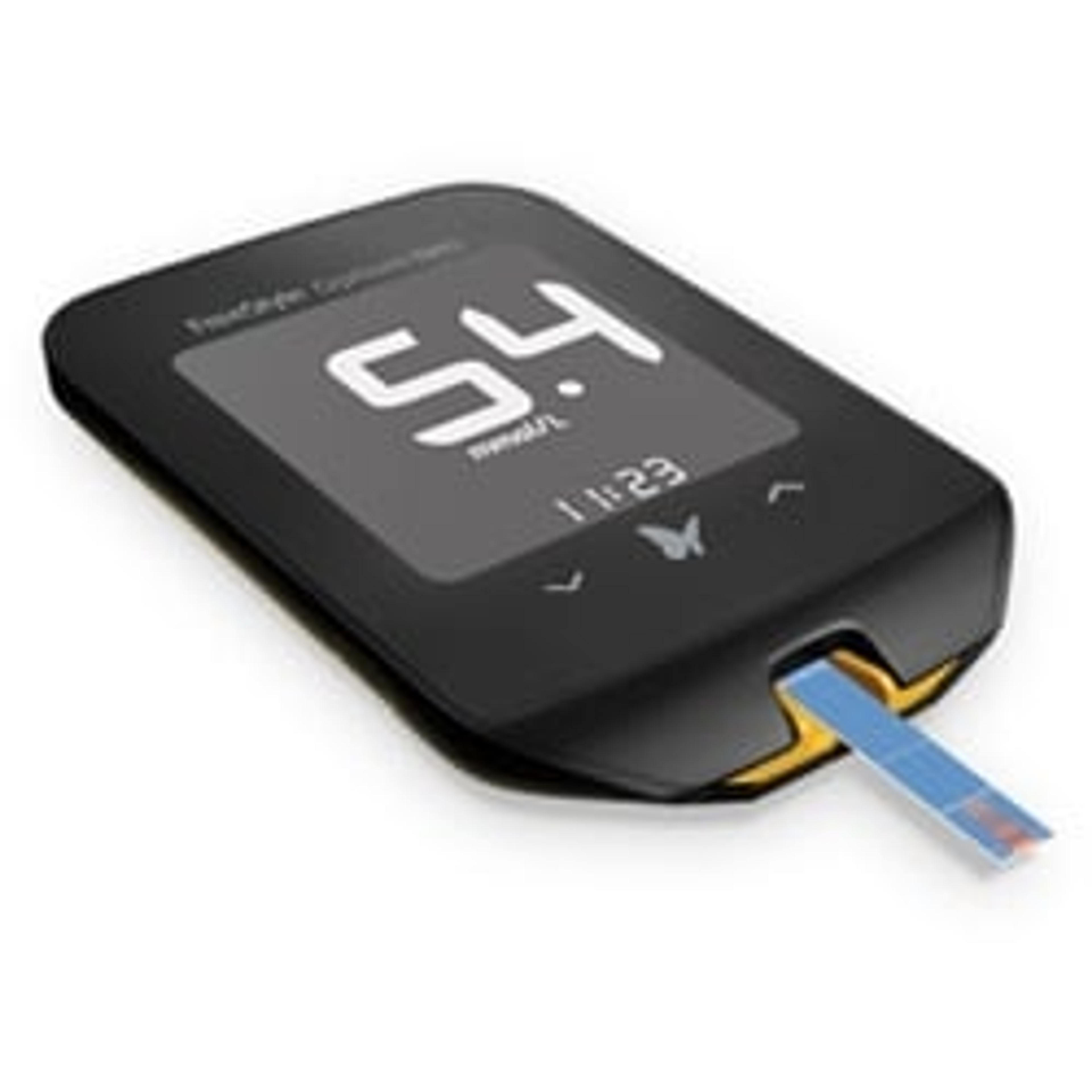Data shows Abbott's FreeStyle Libre system dramatically decreases diabetic ketoacidosis-related hospitalizations
Additional real-world data demonstrate meaningful outcomes for people living with diabetes who use Abbott's glucose sensing technology
16 Jun 2020
Abbott has announced results from multiple new real-world studies1,2,3,4 that demonstrate how use of the FreeStyle Libre system, the world-leading5 continuous glucose monitoring (CGM) technology, can lead to significant clinical benefits among people living with type 1 and type 2 diabetes. Notable findings, presented at this year's American Diabetes Association (ADA) 80th Scientific Sessions, show that using the FreeStyle Libre technology is associated with substantial reductions in hospitalizations from diabetic ketoacidosis (DKA), a serious condition that can lead to diabetic coma or even death.6 Results also showed a decrease in rates of acute diabetes events (ADE) and all-cause hospitalizations as well as lowered and sustained hemoglobin A1c (HbA1C) levels.
Data were presented as part of the RELIEF study (Abstract 68-OR), the largest retrospective study of its kind analyzing the impact of FreeStyle Libre portfolio use on the incidence of hospitalizations for DKA. In the study, researchers assessed nationwide reimbursement claims data in France of 74,158 people living with diabetes, including 33,203 people with type 1 diabetes and 40,955 people with type 2 diabetes.
Notable findings demonstrated:
- Overall, annual DKA rates dramatically dropped by 52% in those with type 1 diabetes and 47% in those with type 2 diabetes when using the FreeStyle Libre system.
- Greatest reductions in DKA-related hospitalizations occurred in people who did not conduct traditional fingerstick testing, as well as those who performed fingersticks more than five times per day, regardless of previous test strip usage.
- In those who did not fingerstick, results showed decreases of 60% and 51% in people with type 1 and type 2 diabetes, respectively.
- For people who performed fingersticks more than five times per day, findings showed drops of 59% for people with type 1 diabetes and 52% for people with type 2 diabetes.
"The results of this study strongly support our hypothesis that the use of the FreeStyle Libre technology enables people to identify and reduce hyperglycemia, and in turn, limit diabetic ketoacidosis," said Ronan Roussel, M.D., Ph.D., chief of the endocrinology, diabetes and nutrition department at Hôpital Bichat, Fédération de Diabétologie, AP-HP in Paris, France, and lead author for the RELIEF study. "These data are suggestive of significant, long-term health benefits and cost savings from use of Abbott's sensor-based glucose monitoring system."
ADDITIONAL STUDIES DEMONSTRATE MEANINGFUL OUTCOMES FOR PEOPLE WITH DIABETES
Additional abstracts presented at ADA showed:
- Sustainable HbA1c Decrease at 12 Months for Adults with Type 1 and Type 2 Diabetes Using the FreeStyle Libre System (Abstract 74-LB): Through a real-world analysis of the National Diabetes Register in Sweden, researchers identified 39,554 people with type 1 or type 2 diabetes using the FreeStyle Libre system. A subgroup of people who had used the FreeStyle Libre system for nine to 15 months were able to significantly lower their HbA1C levels with a sustained effect at 12 months (0.44% drop in people with type 1 diabetes and a 0.66% reduction in those with type 2 diabetes). These A1c changes are usually associated with intensification of diabetes treatment regimens and highlight the important clinical benefits the FreeStyle Libre system may have in people with diabetes.
- FreeStyle Libre System Use is Associated with Reduction in Inpatient and Outpatient Emergency Acute Diabetes Events (ADE) and All-Cause Hospitalizations in Patients with Type 2 Diabetes3 (69-OR): In a retrospective, observational analysis of 1,244 people with type 2 diabetes on short-acting insulin in the U.S., researchers found use of the FreeStyle Libre system was associated with substantial reductions of 51% in acute diabetes events (ADE) and 28% in all-cause hospitalizations. These findings suggest positive health economics outcomes and use of the FreeStyle Libre technology, priced at a third of the cost of other CGMs, provides significant cost-savings.
- Utilization of Continuous Glucose Monitors is Associated with Reduction in Inpatient and Outpatient Emergency Acute Diabetes Events (ADE) Regardless of Prior Blood Test Strip Usage (875-P): Through a retrospective, observational study of 12,521 people living with type 1 or type 2 diabetes in the U.S., researchers found that use of CGMs, including Abbott's FreeStyle Libre system, was associated with a 46% reduction in ADE, regardless of test strip usage prior to the start of using CGMs.
"These new data further reinforce the life-changing benefits of Abbott's glucose sensing technology in delivering meaningful outcomes for people living with both type 1 and type 2 diabetes," said Mahmood Kazemi, M.D., divisional vice president, global medical and scientific affairs and chief medical officer, Diabetes Care, Abbott. "Through improved glucose control and reductions in diabetes-related complications or hospitalizations, the findings underpin why millions of people globally choose our FreeStyle Libre system to manage their condition and improve their quality of life."
About the FreeStyle Libre System:
Abbott's FreeStyle Libre technology, the #1 sensor-based glucose monitoring system used worldwide,5 reads glucose levels through a sensor that can be worn on the back of the upper arm, eliminating the need for fingersticks.8 The FreeStyle Libre portfolio has changed the lives of more than two million people across 50 countries and has secured partial or full reimbursement in 36 countries, including France, Ireland, Japan, the United Kingdom, and the U.S.
INDICATIONS AND IMPORTANT SAFETY INFORMATION
FreeStyle Libre and FreeStyle Libre 14 day Flash Glucose Monitoring systems are continuous glucose monitoring (CGM) devices indicated for replacing blood glucose testing and detecting trends and tracking patterns aiding in the detection of episodes of hyperglycemia and hypoglycemia, facilitating both acute and long-term therapy adjustments in persons (age 18 and older) with diabetes. The systems are intended for single patient use and require a prescription.
Want more of the latest science news straight to your inbox? Become a member of SelectScience for free today>>

